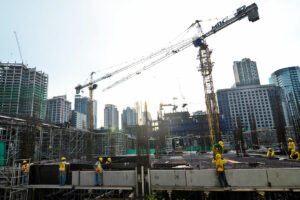THE PHILIPPINES is reviving a push for companies to help fund infrastructure from airports to bus lanes now worth $43 billion, aiming to keep its luster as one of Asia’s growth stars amid limited fiscal space.
President Ferdinand R. Marcos, Jr.’s administration wants to accelerate over a hundred projects with the private sector to ease strain on the government’s budget and to reduce foreign borrowings, said Ma. Cynthia Hernandez, who leads the agency in charge of public-private partnerships.
“The government doesn’t have the monopoly of ideas,” Ms. Hernandez said in an interview on Friday. “The private sector might have better access to technology and knowledge.”
These projects being offered for private funding include operations of a Japan-funded subway in the capital that’s still being constructed and the upgrade of airports in tourism spots. The government is also now more open to companies’ unsolicited proposals, Ms. Hernandez said.
The previous administration of President Rodrigo R. Duterte preferred funding projects using foreign loans over public-private partnerships (PPP), as it wanted to take advantage of lower borrowing costs. Mr. Marcos’ government has revitalized the PPP program, as it balances infrastructure goals with fiscal consolidation.
Mr. Marcos plans to maintain annual spending on infrastructure at around 5% to 6% of gross domestic product throughout his term, but his government is contending with tight fiscal space after pandemic spending pushed budget deficit to a record high in 2021.
The budget gap narrowed to 6.2% of GDP last year, and the administration’s goal is to further pare it to 3% in 2028 when the president’s term ends.
The need to tap private sector funding for infrastructure projects is even more urgent as the Philippines would lose access to concessional loans with lower interest rates if it gains upper middle-income status next year, according to Ms. Hernandez.
“The private sector is willing to invest in bankable and viable projects, but we need to do the work,” she said.
Government infrastructure projects tapping funding from companies could be a major growth driver for the Philippines and could also boost banks by spurring loan demand, said Grace Lim, senior ASEAN (Association of Southeast Asian Nations) and Asia economist at UBS Investment Bank Global Research.
“When it comes to large-scale investment, when it starts breaking ground and when it starts adding to GDP via the investment route, it tends to be rather spread out,” Ms. Lim said.
The government is targeting to grow the economy by 6.5% to 7.5% this year, after posting Southeast Asia’s quickest expansion in 2023 on robust consumption and investment. — Bloomberg
